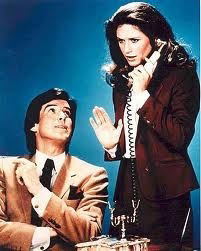Cornelia Bailey is a Strategic Innovation Consultant at University of Chicago. At #heweb13, she gave us some insight into the mobile app challenge she has directed now going into its third year.
Whenever you begin a mobile app challenge, it is important to ask yourself two big questions:
“Why would we do this?”
“How much work does it take?”
A little bit of background: University of Chicago is not an engineering school. Without engineering students, they needed to plan the challenge to have non-programmers be comfortable submitting. In their current challenge (year three), they invited students, faculty and staff from both the University and the hospital to submit their app ideas.
When starting your challenge, decide if you are going to require submitting finished apps, who you will get your ideas from, and if you will be offering a prize.
In their first year, the team ran it very modestly. (They were unsure if anyone would really care anyway.) UofC required entrants to submit their ideas of an app along with a (boring) video. They received eighteen entries, six of which turned into finalists. Each finalists gave a presentation (New Venture Challenge) essentially defending their app. These initial efforts took 120 hours of their time and they awarded $1500 in prizes to three winners, including consulting work to bring their apps to life.
Going into the second year, they worked with their partners, the Polsky Center for Entrepreneurship and Innovation (the big, beautiful front man that everyone wants to date, AKA Remington Steele) and UChicagoTech (the big guy with deep pockets) to make the program more robust.
They developed three phases spanning the entire academic year – fall, winter, and spring, finishing with the New Venture Challenge. In order to get the word out and encourage more entries, their partners (Polsky Center and UChicagoTech) used their social media to share the posts and messages from IT Services and they emphasized to entrants that they did not need to be programmers.
Phase one: Pitch
In this first phase, entrants filled out a form answering six long-form questions about their idea. Each entry was reviewed by three partner judges (for practicality) and two programmers (for viability).
Initially, hospital employees were not asked to participate, but a slip up that caused the challenge to be advertised on the screensavers in the hospital changed that.
Unanticipated Outcomes
They received a whopping 113 entries! Judging 113 entries proved difficult, and something they were not prepared for. This, in turn, hindered communication, as there was so much information to get out to so many people.
Interestingly enough, the entrants were equal parts undergrads, grads, and staff, but not many faculty ended up submitting.
Phase two: Prototype
The twenty-one best ideas were invited for an 8-week workshop on app development. Entrants had to attend four workshops (one and a half hours over lunch), submit a business plan, screen mockups and a video for their app.
With this larger number, the team increased the number of partner judges to six and whittled down the entries to the top three.
The team was asking the entrants how they would make money. They also built paper prototypes and did user testing. Programmers worked with the entrants to discuss what was possible and feasible. Besides this technological scrutiny, UChicagoTech also helped with the legal viability of the apps.
Bailey stressed here how important it is to find your experts on campus. This helps create buy-in with your campus community and a good partnership.
Unanticipated Outcomes
With seventeen of the twenty-one semi-finalists continuing through the whole process, there was an extremely high level of engagement. Since they were all non-technical people, this added another layer of complexity and time to the challenge. They also had a difficulty scheduling with the all represented groups (undergrads, grads, and staff) having such varied schedules.
Phase three: The Build
A Minimum Viable Product (MVP) was designed and built over three sprints in eight weeks. The apps were coded for iOS because this is what kind of experts the team had access to.
The three finalists were all hospital staff and had to create an eight-minute presentation about their app. The finalists were:
- Emergency Room Transition
- Family Chronic Condition History
- Research Lab Protocol Recordings
—
DETOUR! Let’s talk: Speaker Series
In the last three months of the app challenge, they held seven speaker talks on mobile topics. UofC invited experts from Motorola, Peapod labs, and Apple along with four faculty members to speak about mobile. Again, this was a great way to create buy-in and make connections with campus.
They held all the talks at the Polsky Center, which is highly regarded as an innovation center. All of the talks were recorded and available on their website.
—
When they were looking to start phase three going into the spring, they recruited interns from the computer science masters program to help with the build.
Unanticipated Outcomes
The team pleasantly surprised themselves with their ability to get students up to speed in just eight weeks. (it did help to have an iOS expert in house.) Also, they had smooth development cycles where they were in constant control of their expectations. They were happy with how much work was completed.
The best outcome of all was the job opportunities that were created for their interns.
Final Round:
New Venture Challenge – this is where the business teams defend their apps to the expert judges. The winner, of course, would received $10,000. The Emergency Room Transition app was the winner, and is currently in it’s testing phase now.
For staffing in year two, the team consisted of:
- detail oriented writer and technical project manager
- Senior iOS developer
- a videographer/photographer (a good one!)
Year 3
For year three, they will continue with the three phase model that spans the academic year. UChicagoTech once again is giving a $10,000 prize. From Bailey’s charts, you can see how the hours will be covered differently in Year Three. Bailey will be able to start new projects as she taps students and part-time employees to help with the tested phases of the challenge. They also are working with companies to sponsor the internships which is a win-win for the company, the challenge, and the students.
At this point, you may ask yourself, “Why in the WORLD would they do this?”
The answer is simple: being an equal player.
IT Services is looked at as a client services only department. Through this mobile app challenge, they are positioning themselves in the experience area and moving away from only being in the commodity, goods, and services side of things.
- Bailey has a few suggestions in order to make a mobile app challenge truly successful:
- Test the waters, like they did in year one
- Pair the best ideas with programmers – this is how you get compelling apps built!
- Invite experts to talk
- Offer a big prize (find a sponsor!)
- Make sure to document – collect pictures and video along the way
- Advertise locally. Bailey gave out unrelated mugs to freshman during orientation and said, “Oh, by the way…” to talk it up.
Bailey leaves us with a note on intellectual property: “We tell people if they go through the entire challenge, they do not lose their IP stake. A faculty member may be treated differently, as the University may own it.”
Bailey has left us all with a lot to think about to get our own mobile app challenges up and successful.
Challenge accepted!
Photo Credit: <a href=”http://www.flickr.com/photos/93427231@N06/8493737420/“>Old Trunk</a> via <a href=”http://compfight.com“>Compfight</a> <a href=”http://www.flickr.com/help/general/#147“>cc</a>

